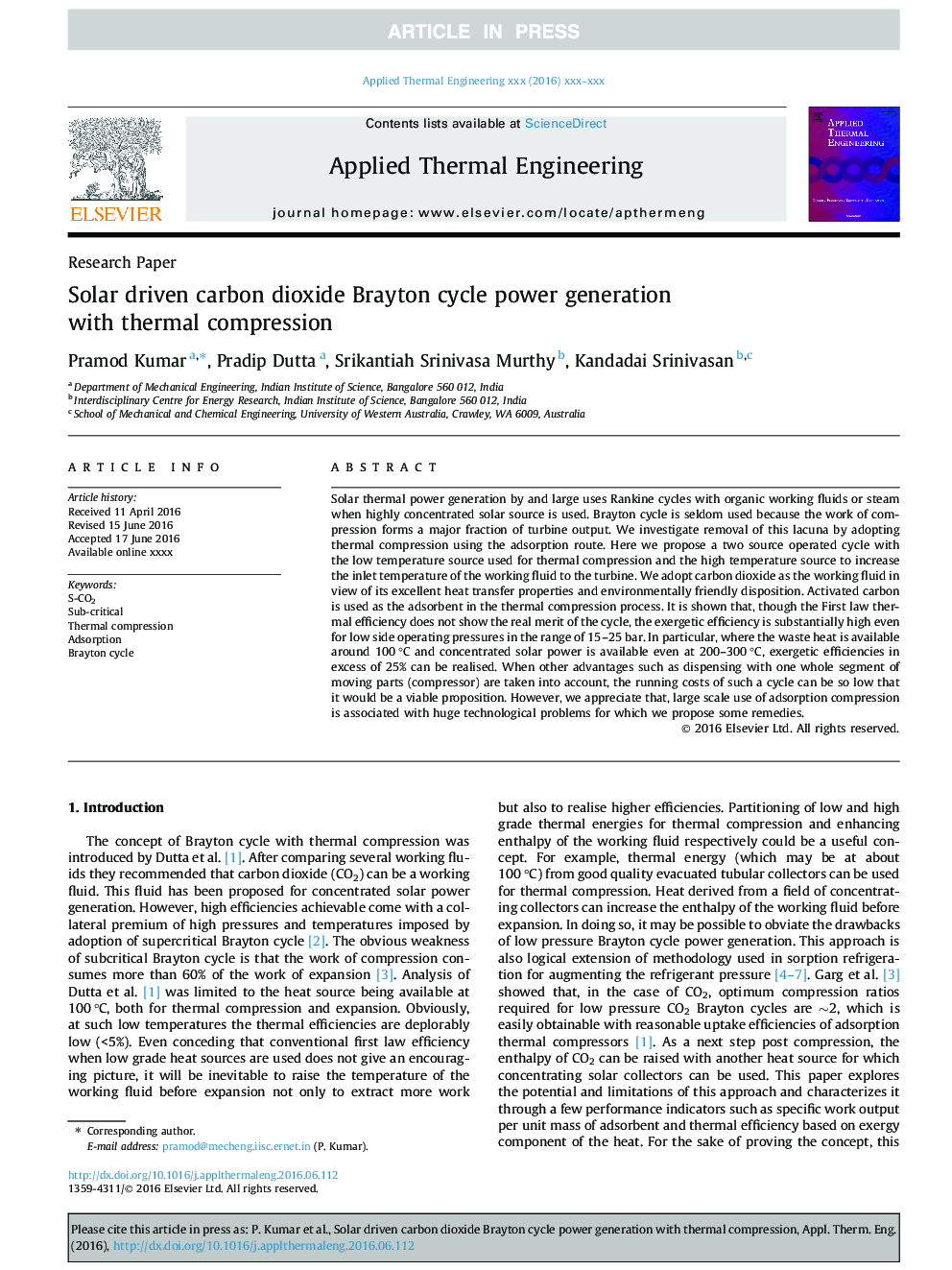| Article ID | Journal | Published Year | Pages | File Type |
|---|---|---|---|---|
| 4992203 | Applied Thermal Engineering | 2016 | 7 Pages |
Abstract
Solar thermal power generation by and large uses Rankine cycles with organic working fluids or steam when highly concentrated solar source is used. Brayton cycle is seldom used because the work of compression forms a major fraction of turbine output. We investigate removal of this lacuna by adopting thermal compression using the adsorption route. Here we propose a two source operated cycle with the low temperature source used for thermal compression and the high temperature source to increase the inlet temperature of the working fluid to the turbine. We adopt carbon dioxide as the working fluid in view of its excellent heat transfer properties and environmentally friendly disposition. Activated carbon is used as the adsorbent in the thermal compression process. It is shown that, though the First law thermal efficiency does not show the real merit of the cycle, the exergetic efficiency is substantially high even for low side operating pressures in the range of 15-25 bar. In particular, where the waste heat is available around 100 °C and concentrated solar power is available even at 200-300 °C, exergetic efficiencies in excess of 25% can be realised. When other advantages such as dispensing with one whole segment of moving parts (compressor) are taken into account, the running costs of such a cycle can be so low that it would be a viable proposition. However, we appreciate that, large scale use of adsorption compression is associated with huge technological problems for which we propose some remedies.
Related Topics
Physical Sciences and Engineering
Chemical Engineering
Fluid Flow and Transfer Processes
Authors
Pramod Kumar, Pradip Dutta, Srikantiah Srinivasa Murthy, Kandadai Srinivasan,
